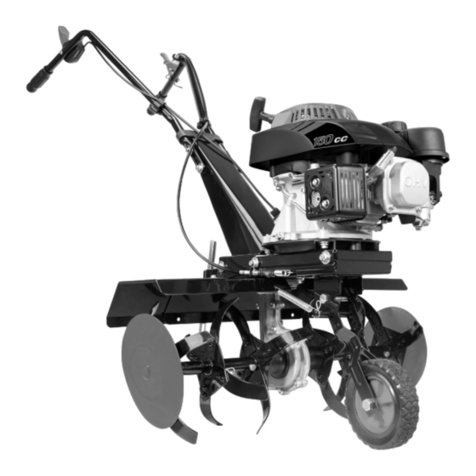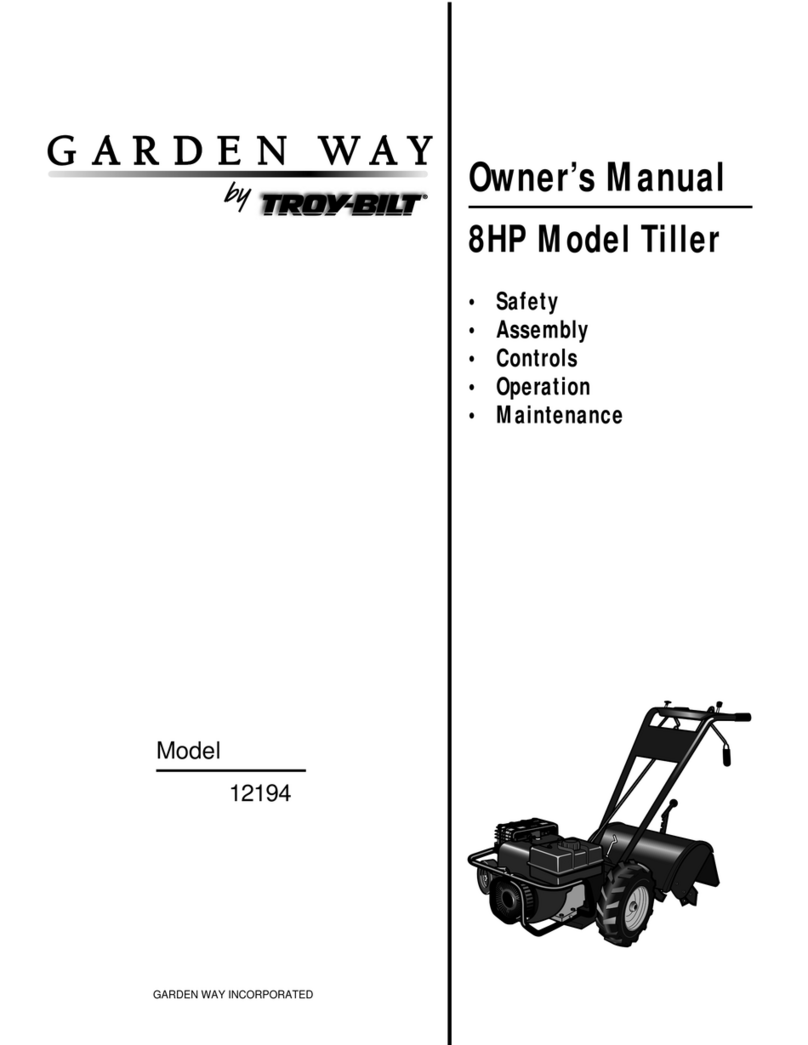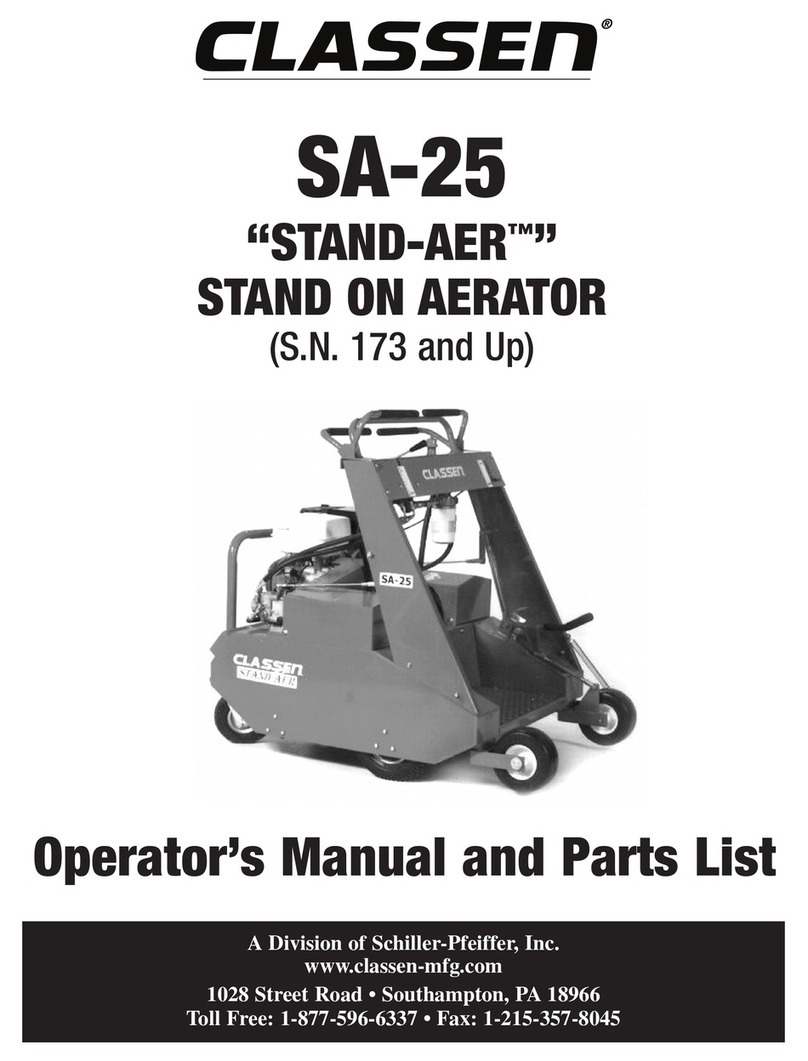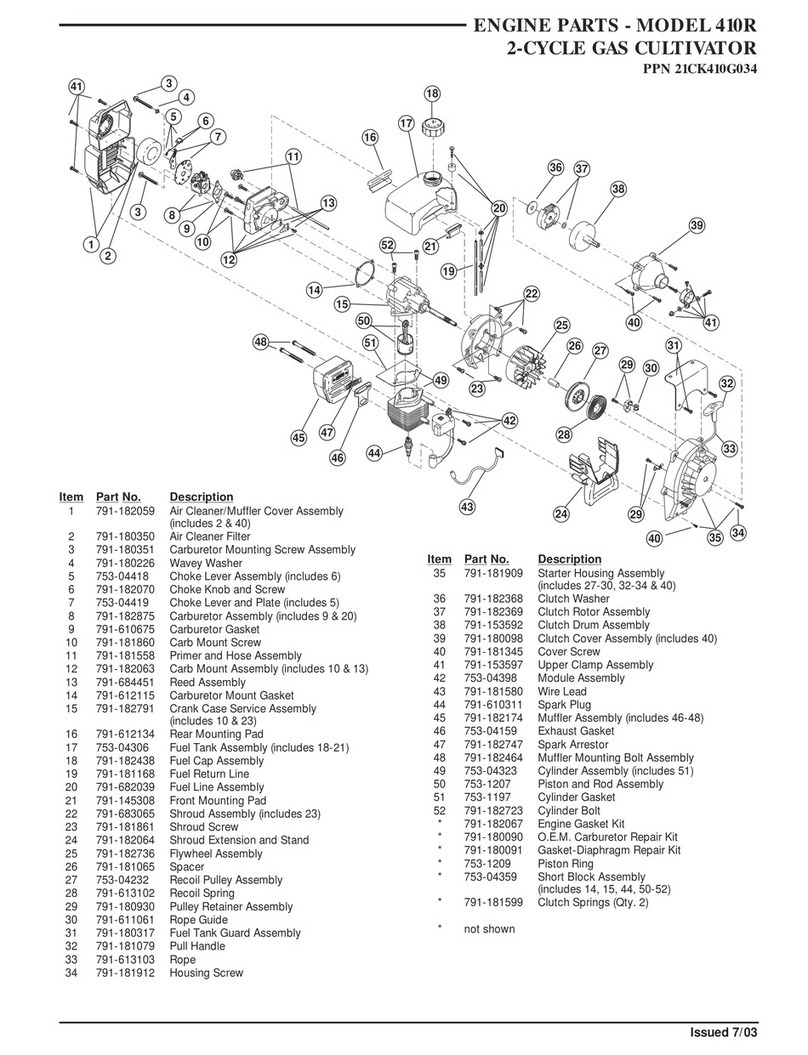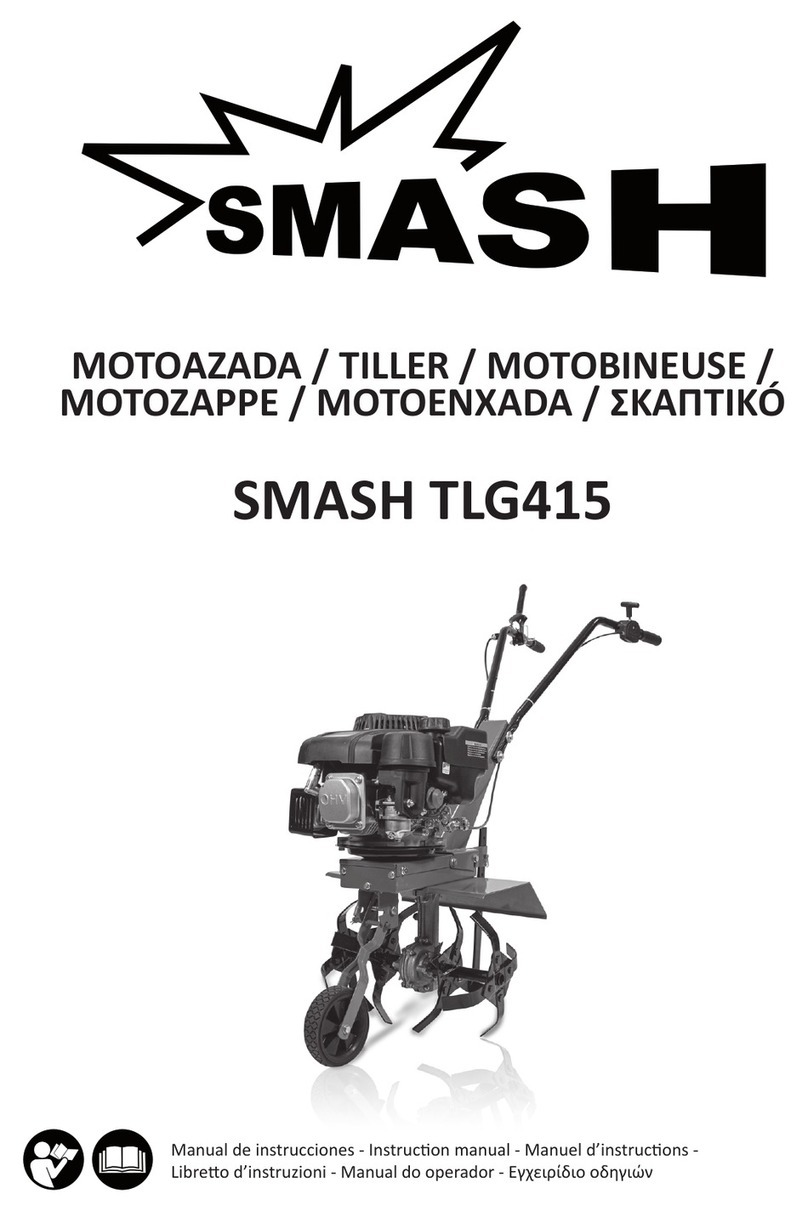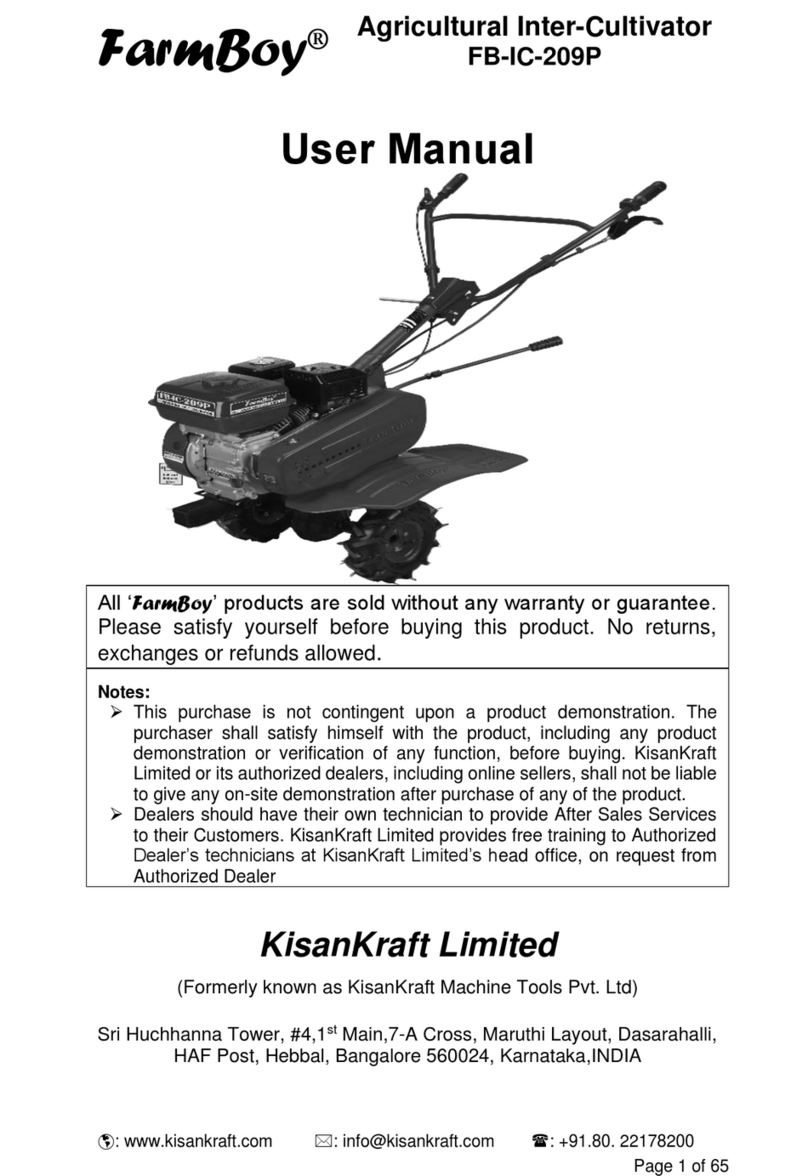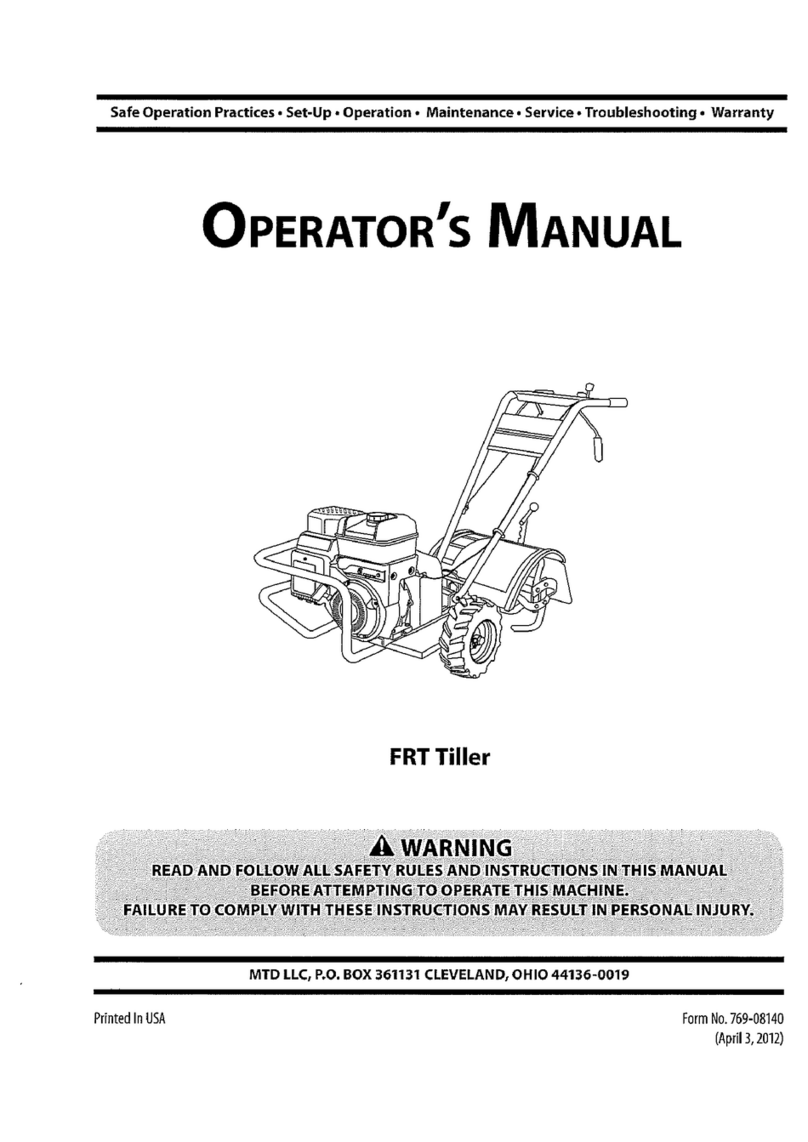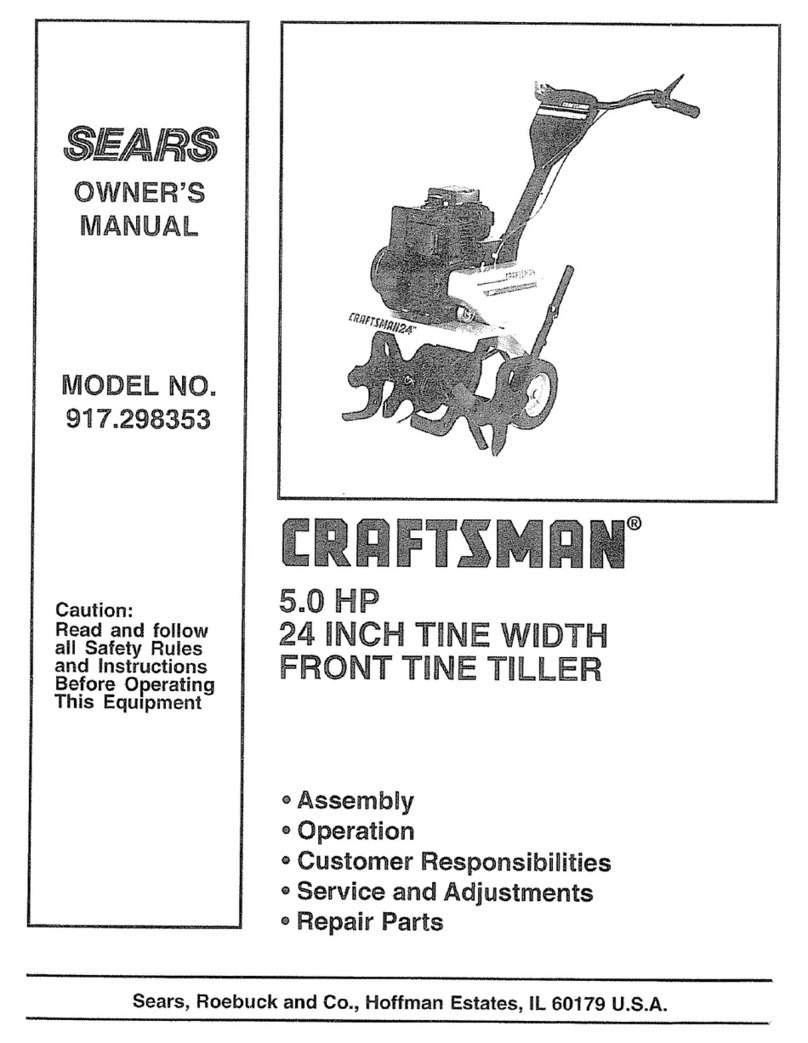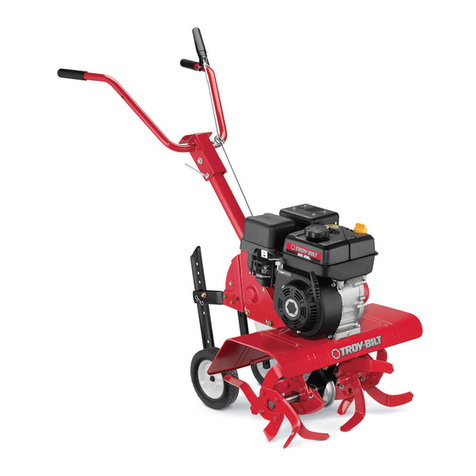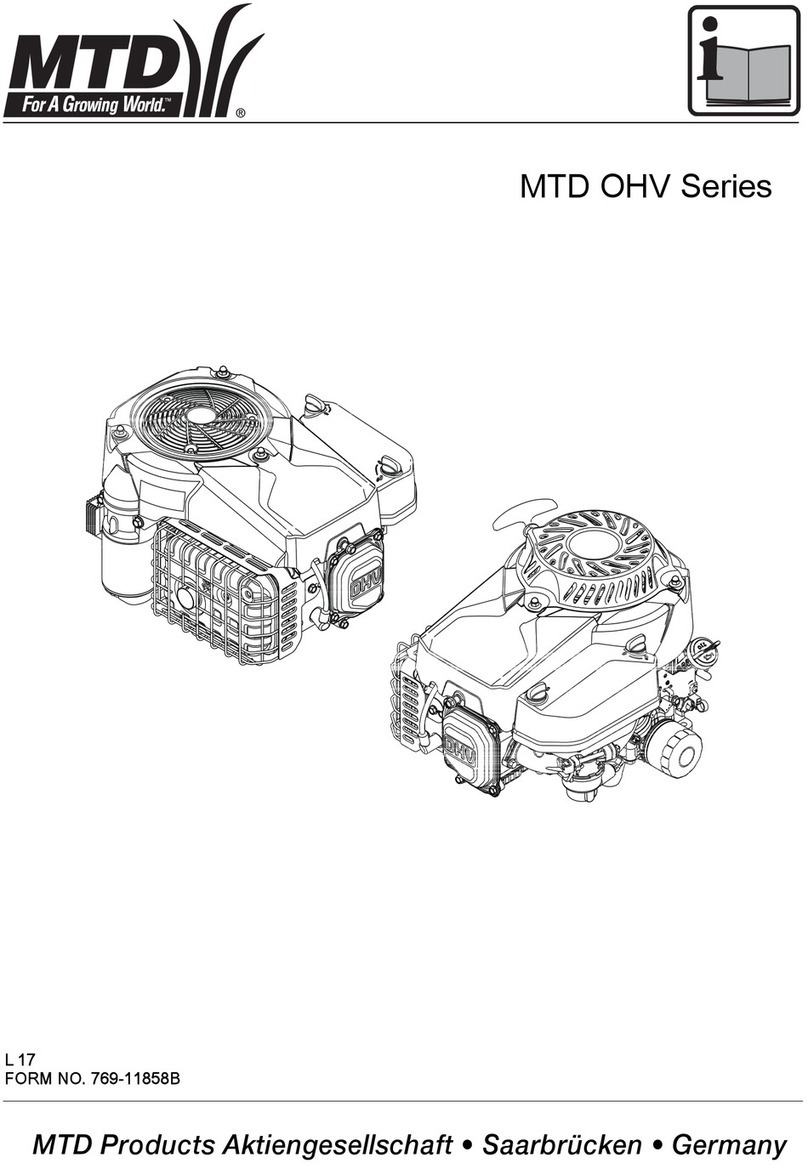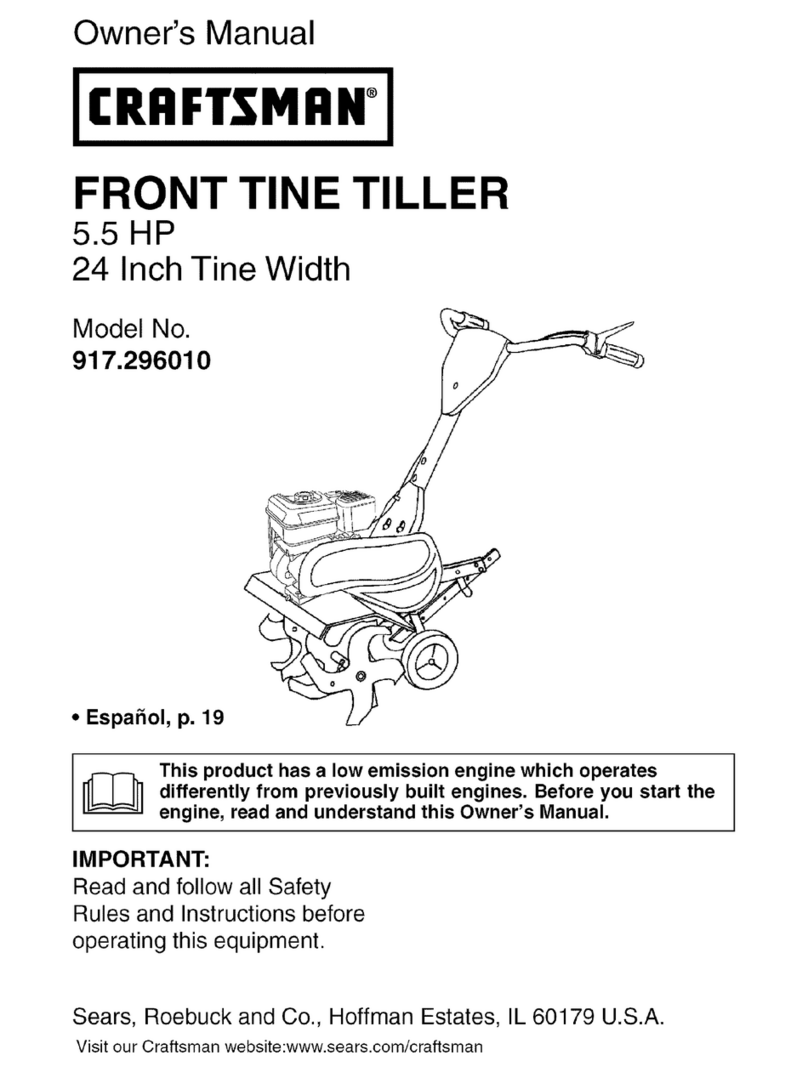the special adjustment recommended by the manufacturer).
F)Safety glasses should be worn during any operation such as preparation,
operation and maintenance.
2.3:Operation
A)hands and feet must not be close to or under rotating parts.
B)Special care should be taken when operating on (or through) gravel pavements,
pavements or highways to guard against potential dangers, pay attention to traffic
conditions and do not carry passengers.
C)After hitting the sundries, stop the engine (motor) and check whether the
cultivator is damaged comprehensively. If damaged, the cultivator can only be restarted
and operated after repair.
D) Always watch your step to avoid slipping or falling.
E)Once abnormal vibration occurs, the machine should immediately stop the
engine (motor) to find the cause, vibration is usually the precursor of failure.
F)When leaving the control position, stop the engine (motor) before cleaning up
blade blockage and during maintenance, adjustment or inspection.
G) When the machine is unattended, all possible precautions should be taken:
disconnect the power output shaft, lower the attachment, stall the engine and remove
the switch key.
H) Before cleaning, repairing or inspecting the machine, the engine should be
turned off and all moving parts should be in a stop state.
I) Exhaust fumes from the engine are harmful. Do not operate indoors.
J) No tillage machine shall be operated without proper protective device,
protective cover or other protective device in place.
K) Stay away from children and pets.
L)Do not overload the machine due to the high depth and speed of ploughing.
M) The machine must not run at high speed on slippery roads. Observe the back
and operate carefully when going backwards.
N) No bystanders are allowed to approach the machine while it is in operation.
O) Only additional devices and equipment (such as wheel weights, balancing
blocks, cab, etc.) permitted by the tiller manufacturer shall be used.
P)Do not operate the cultivator when vision or light is poor.
Q) Care should be taken when tilling hard ground. Blades may hook into the
ground and push the tiller forward. If this happens, release the handrail and do not
control the machine.
R) Cultivators are not allowed to work on steep slopes.
S)Tilting should be prevented when the cultivator goes downhill.
2.4:Maintenance and storage
A) Keep machines, accessories and equipment, including batteries, in safe
working condition. If possible, remove the battery for storage to prevent freezing and
charge properly if necessary.
B) Check whether the shear bolts, engine fixing bolts and other bolts are
tightened properly at regular intervals to ensure that the machine is in a safe working
state.
